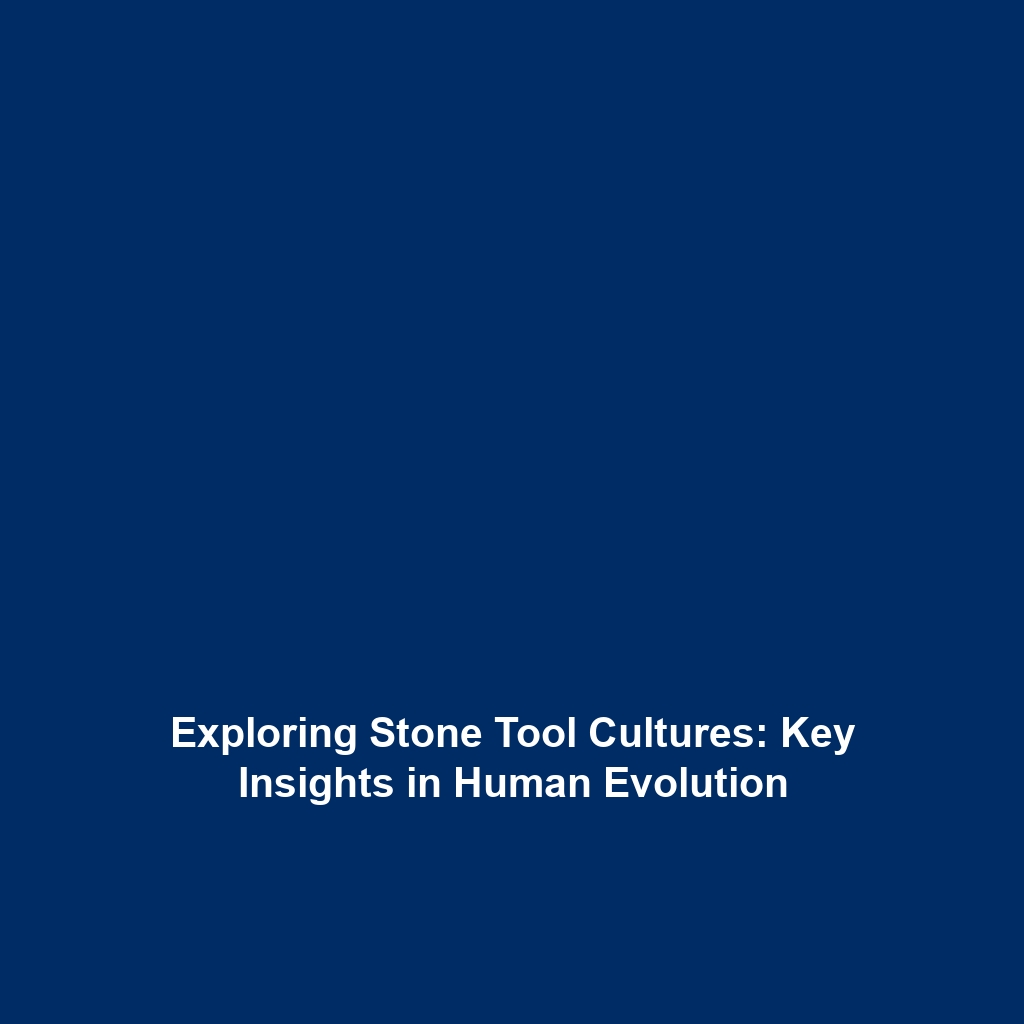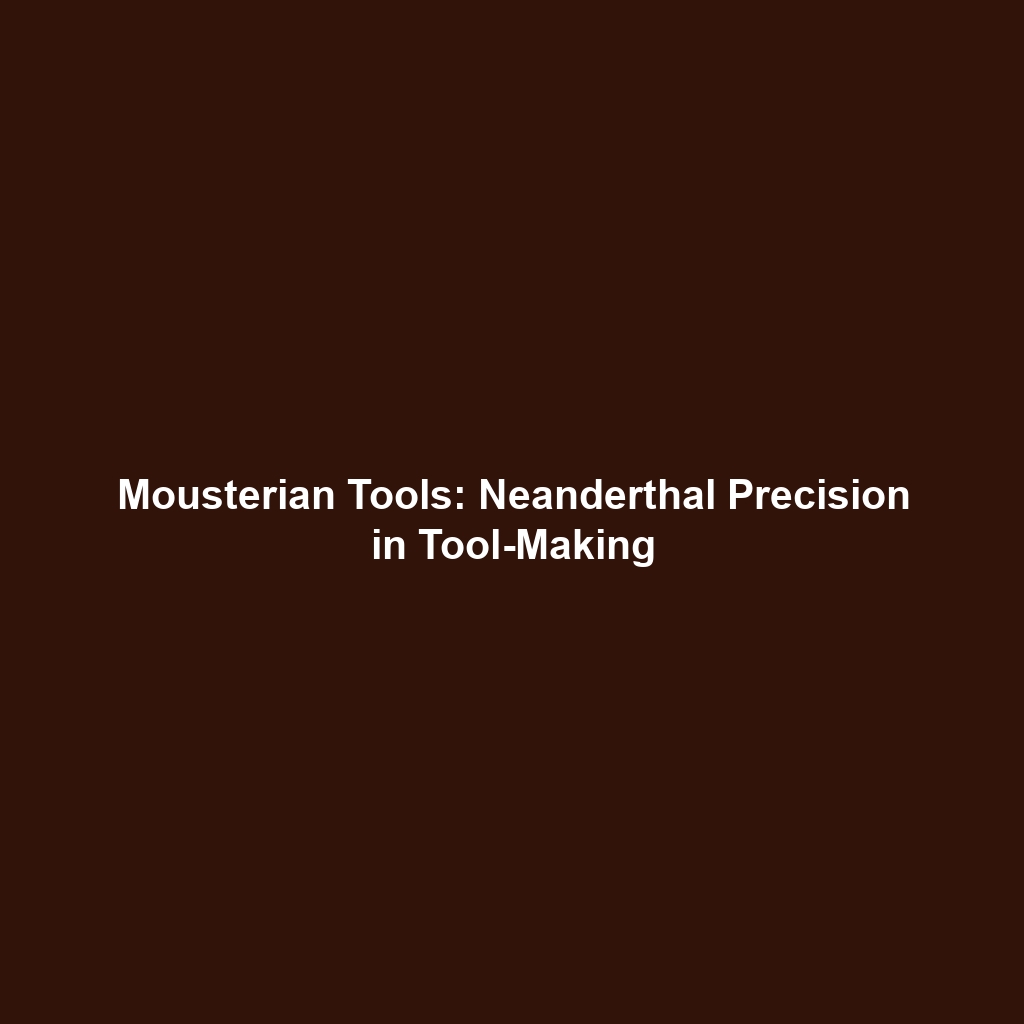Understanding Stone Tool Cultures and Their Role in Human Evolution
Stone Tool Cultures represent a fundamental milestone in the story of human evolution. These artifacts, created and utilized by our ancient ancestors, not only illustrate the evolutionary journey of early hominins but also reflect significant advancements in cognitive abilities, social structures, and survival strategies. Studying these cultures offers invaluable insights into how our lineage developed tools that shaped our existence. This article delves into the importance of Stone Tool Cultures, providing a comprehensive overview of their concepts, applications, challenges, and future research.
Key Concepts of Stone Tool Cultures
Stone Tool Cultures are categorized into distinct phases, each marked by specific techniques and types of tools. These are some of the major concepts:
- Oldowan Industry: Recognized as the earliest stone tool culture, characterized by simple, crude tools dating back approximately 2.6 million years.
- Acheulean Technology: This culture is famous for its bifacial hand axes, showcasing improved craftsmanship and planning, appearing around 1.76 million years ago.
- Middle Paleolithic Tools: Associated with Neanderthals and early modern humans, featuring the Levallois technique which allowed for more controlled flake production.
Stone Tools and Human Evolution
The evolution of stone tools marks a crucial aspect of human development. These tools are not just instruments for survival but signify cognitive advancements in problem solving and foresight, pivotal for success in various environments. The progression from simple flakes to sophisticated implements demonstrates the complex cognitive capabilities that emerged in hominins, shaping the path of human evolution.
Applications and Real-World Uses
Studying Stone Tool Cultures offers insights into the practical uses of tools throughout human history. Here are some significant applications:
- Archaeological Insights: They help researchers understand ancient societal structures, resource management, and environmental adaptation.
- Cultural Studies: Tools reveal the cultural practices of ancient populations, including diet, shelter construction, and communal activities.
- Educational Models: Current experiments use reconstructions of stone tools to teach cognitive development and technological progress in human evolution.
Current Challenges in Studying Stone Tool Cultures
Despite the wealth of information available, several challenges hinder the study and application of Stone Tool Cultures:
- Dating Techniques: Determining the exact age of stone tools can be difficult, leading to potential misinterpretations of their historical significance.
- Fragmentation: Incomplete archaeological findings complicate understanding the full breadth of tool cultures and their use.
- Environmental Degradation: Modern activities can lead to the loss of archaeological sites, which are critical for research.
Future Research and Innovations
Future research on Stone Tool Cultures is poised to be transformative. Technological innovations, including:
- 3D Scanning and Analysis: Allowing for detailed studies of tool morphology and usage wear.
- Experimental Archaeology: Enabling researchers to recreate ancient tool-making techniques to better understand historical contexts.
- Genetic Studies: Providing insight into how the evolution of tool-making may have been correlated with hominin migrations and interactions.
Conclusion
Stone Tool Cultures are an essential thread in the tapestry of human evolution, offering insights into the cognitive and social advancements of our ancestors. Understanding their significance helps illustrate the complexities of human development over millions of years. For further reading on related topics, visit our sections on Human Evolution and Archaeology.


